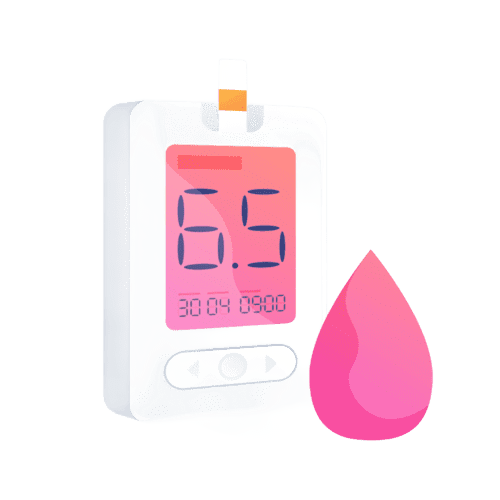Learn how aligning personal and company values enhances team trust and performance. Discover the power of person-organization fit in recruitment and the role of respect-for-people culture in creating high-performing teams. Unlock the secrets to effective teamwork and organizational success.
The Ethics of Software Design in Biomedicine: Navigating Complexities and Ensuring Responsible Development
Explore the ethical challenges and risk management strategies in biomedical software design, emphasizing the importance of comprehensive frameworks like the Software Development Impact Statement (SoDIS) to safeguard patient safety, privacy, and equity in healthcare technology.

In the modern era, technology plays an increasingly crucial role in the field of medicine. The advent of advanced software applications has revolutionized how healthcare professionals diagnose, treat, and manage patient care. However, as the reliance on technology grows, so does the need for ethical considerations in software design, particularly within the biomedical domain. This article delves into the ethical challenges associated with biomedical software design, explores risk identification and management strategies, and emphasizes the importance of comprehensive ethical frameworks to ensure safe and effective healthcare technology.
The Intersection of Technology and Biomedicine
Technological advancements have led to the development of sophisticated software systems that assist in various medical functions, such as data management, diagnostics, treatment planning, and patient monitoring. These systems have the potential to improve healthcare outcomes significantly. However, the complexity of biomedical software design and the high stakes involved require developers to consider the ethical implications of their work.
Biomedical software must be designed with a broad understanding of its impact, extending beyond the immediate technical requirements. Focusing narrowly on functionality or efficiency without considering the broader ethical and social contexts can lead to unforeseen consequences that may jeopardize patient safety and privacy.
The Importance of Ethical Software Design
Ethical considerations in software design are paramount, especially in biomedicine, where human lives are directly impacted. The World Health Organization (WHO) defines health as „a complete state of physical, psychological, and social well-being, not merely the absence of disease or infirmity.” This broad definition underscores the need for software that aligns with ethical principles to ensure holistic patient care.
Failure to incorporate ethical principles in software design can lead to severe consequences, such as patient harm, breaches of privacy, and loss of trust in medical technology. For instance, a seemingly minor software error could result in incorrect dosage recommendations, misdiagnosis, or failure to detect life-threatening conditions.
Common Ethical Challenges in Biomedical Software Design
1. Data Privacy and Security
One of the foremost ethical concerns in biomedical software design is data privacy. Medical data is highly sensitive, and any breach of confidentiality can have dire consequences for patients. Developers must ensure robust security measures to protect patient information from unauthorized access, data breaches, or misuse. Implementing encryption, secure authentication protocols, and regular security audits are essential practices to safeguard data.
2. Informed Consent and Transparency
Biomedical software often involves the collection and use of patient data for various purposes, including research, diagnostics, and treatment planning. It is crucial that patients are fully informed about how their data will be used, who will have access to it, and the potential risks involved. Obtaining informed consent and maintaining transparency throughout the software’s use is a fundamental ethical requirement.
3. Bias and Discrimination
Algorithms used in biomedical software can sometimes reflect biases present in the data used to train them. If not carefully addressed, these biases can lead to discriminatory outcomes, affecting patient care and treatment recommendations. Developers must strive to identify and eliminate biases in their algorithms, ensuring that software solutions are equitable and fair to all patient groups.
4. Safety and Reliability
The safety and reliability of biomedical software are critical, given the potential for direct impact on patient health. Software failures, whether due to bugs, design flaws, or unforeseen interactions, can lead to catastrophic outcomes. Rigorous testing, validation, and continuous monitoring are essential to ensure that biomedical software performs as intended under all circumstances.
%
Data Breach Incidents in Healthcare
In 2023, the healthcare industry experienced over 50% of all reported data breaches, with an average cost of $10.93 million per incident, highlighting the critical need for robust data privacy and security measures in biomedical software.
%
Bias in AI Medical Diagnostics
Studies have shown that up to 60% of AI-based diagnostic tools reflect biases present in training data, leading to potential disparities in healthcare outcomes among different patient groups.
Risk Identification & Management in Biomedical Software Design
Risk identification is a crucial aspect of ethical software design. It involves recognizing potential hazards that could arise from the software’s deployment and use. The following sections outline key risk identification and management strategies:
1. Software Failure
Software failures can range from minor inconveniences to major life-threatening situations. These failures may be due to coding errors, design flaws, or unexpected interactions within the system. For example, in a noted incident, a simple coding error in a medical device led to a situation where the emergency stop function was inadvertently linked with the general exit function, causing a delay in stopping a harmful process. Such incidents highlight the importance of comprehensive testing and scenario planning to mitigate risks.
2. The Role of the Software Development Impact Statement (SoDIS)
The Software Development Impact Statement (SoDIS) is a methodology designed to identify and mitigate potential negative impacts of software before its development. By examining the software’s design, tasks, and stakeholder interactions, SoDIS helps developers foresee ethical and safety issues. The process involves identifying stakeholders, analyzing tasks, assessing ethical concerns, and documenting solutions to mitigate identified risks. Implementing SoDIS can significantly reduce the likelihood of ethical oversights and promote safer, more responsible software design.
Case Studies Illustrating Ethical Risks in Biomedical Software
1. Eye Surgery Device Incident
In one case, an eye surgery clinic purchased a new ultrasound device with redesigned software to improve efficiency. However, the emergency stop function, previously a separate and easily accessible button, was combined with the power button to reduce complexity and cost. During a procedure, a surgeon could not quickly locate the emergency stop, resulting in the patient losing sight. This incident underscores the importance of considering user interaction and safety in software design, particularly in critical medical applications.
2. X-ray Machine Incident
Another example involved an X-ray device designed to move between preset positions. The software was tested and found to function correctly within its specified tasks. However, the software did not account for real-world scenarios, such as a patient remaining on the table after an X-ray. In one tragic instance, the machine moved to a low position, injuring a patient who was still on the table. This highlights the need for broader risk considerations, including user behavior and safety checks beyond the software’s immediate functional requirements.
Implementing Ethical Risk Management: The SoDIS Framework
The SoDIS framework provides a structured approach to ethical risk management in software design. It consists of four key stages:
1. Stakeholder Identification
Identifying all relevant stakeholders is the first step. This includes direct users such as doctors and patients, as well as indirect stakeholders like healthcare institutions, researchers, and regulatory bodies. Understanding how each stakeholder interacts with the software helps developers anticipate potential ethical concerns.
2. Task Analysis
Each task within the software development process is analyzed for its potential impact on stakeholders. This involves examining how tasks align with ethical principles and identifying any potential risks associated with their execution.
3. Ethical Issue Identification
Developers assess each task-stakeholder interaction for ethical issues. This step involves asking structured questions to identify concerns, such as whether a task might compromise patient privacy or safety.
4. Risk Mitigation and Documentation
Once ethical issues are identified, developers propose solutions to mitigate risks. These solutions are documented in the SoDIS report, providing a roadmap for addressing ethical concerns throughout the software development lifecycle.
The Broader Ethical Landscape of Biomedical Software
Ethical software design extends beyond individual projects to the broader societal implications of biomedical technology. Developers must consider issues such as:
1. Accessibility and Equity
Biomedical software should be accessible to all patient populations, regardless of socioeconomic status, geographic location, or cultural background. Ensuring that technology does not exacerbate healthcare disparities is an essential ethical consideration.
2. The Role of Regulation
Regulatory frameworks play a vital role in ensuring the ethical development and deployment of biomedical software. Compliance with standards such as the Health Insurance Portability and Accountability Act (HIPAA) in the United States and the General Data Protection Regulation (GDPR) in Europe is crucial for protecting patient rights and maintaining public trust.
3. Continuous Ethical Oversight
Ethical considerations do not end with the deployment of software. Ongoing monitoring, evaluation, and updates are necessary to address emerging ethical challenges, adapt to new technological developments, and respond to feedback from stakeholders.
Conclusion
Biomedical software design is a complex and ethically charged endeavor. The integration of technology into healthcare brings immense potential for improving patient outcomes, but it also raises significant ethical challenges. By adopting frameworks such as the Software Development Impact Statement (SoDIS), developers can proactively identify and address ethical risks, ensuring that biomedical software serves the best interests of patients and society.
Ethical software development requires a commitment to transparency, safety, and equity. It involves not only technical excellence but also a deep understanding of the social, psychological, and cultural contexts in which the software operates. As technology continues to evolve, the ethical standards guiding biomedical software design must adapt, ensuring that the health and well-being of patients remain at the forefront of innovation.
References
- Gotterbarn, D., & Rogerson, S. (2005). Responsible Risk Analysis for Software Development. Communications of the Association for Information Systems, 15, 730-750.
- World Health Organization (WHO). (1982). Preamble to the Constitution. Retrieved from http://www.opbw.org/int_inst/health_docs/WHO-CONSTITUTION.pdf.
- Software Engineering Code of Ethics and Professional Practice. (1999). Institute of Electrical and Electronics Engineers (IEEE) and Association for Computing Machinery (ACM). Retrieved from http://seeri.etsu.edu/Codes/TheSECode.htm.
- Maslow, A. (1970). Motivation and Personality. Harper and Row.
- Rogerson, S. (2004). The ethics of software development project management. In Bynum, T. W. & Rogerson, S. (Eds.), Computer Ethics and Professional Responsibility.
- Gert, B. (1998). Morality. Oxford University
- Murray, S. A., Grant, E., Grant, A., & Kendall, M. (2003). Dying from cancer in developed and developing countries.
Wanna know more? Let's dive in!
Breaking Barriers: How Women Engineers Are Redefining Gender Norms in STEM
Despite efforts to bridge the gender gap, engineering remains a male-dominated field where women often face unique challenges. This article explores how women engineers navigate their careers by adopting or rejecting masculine norms, the strategies they use to thrive, and the broader implications for achieving true gender equality.
A Multilevel Analysis of Work–Life Balance Practices Impact on Employee Commitment
Discover the impact of work-life balance initiatives on employee satisfaction and loyalty, and learn how the alignment of perceptions between managers and employees plays a crucial role in fostering a supportive work environment. Insights from multilevel analysis reveal the importance of personalized support and cultural sensitivity in implementing HR practices.
Understanding Generation Z: Key Insights and Implications
Gen Z, born between 1996 and 2010, is a generation that thrives on authenticity, digital fluency, and a global consciousness. As they wield significant influence and purchasing power, understanding their values and behaviors is essential for brands, educators, and policymakers aiming to connect meaningfully with this emerging powerhouse.
Medical Device DFSS Deployment: A Roadmap to Excellence
Design for Six Sigma (DFSS) is a powerful methodology that integrates quality into the design phase of medical device manufacturing, ensuring safety, reliability, and customer satisfaction. This guide explores the essential phases, roles, and best practices for successful DFSS deployment, helping companies meet regulatory demands and enhance product quality.
Understanding Electrostatic Discharge (ESD) Damage in Integrated Circuits A Comprehensive Analysis
We delve into the systematic methodologies used to identify and analyze electrostatic discharge (ESD) damage in integrated circuits. Understanding these damage mechanisms is crucial for improving IC design, implementing effective ESD-safe handling procedures, and ensuring the reliability and longevity of electronic devices.
Introduction to Good Manufacturing Practice (GMP) and Good Industrial Large Scale Practice (GLSP)
Good Manufacturing Practice (GMP) and Good Industrial Large Scale Practice (GLSP) are essential regulatory frameworks that ensure the quality, safety, and consistency of products in pharmaceutical, biotechnology, and food industries. By adhering to these practices, companies can minimize contamination risks, ensure regulatory compliance, and achieve excellence in large-scale manufacturing operations.
Leveraging SPICE for Software Supplier Qualification in the Automotive Industry
By implementing SPICE-based qualification mechanisms, car manufacturers like Fiat Auto can effectively evaluate their software suppliers, ensuring robust process capabilities and fostering a culture of continuous improvement. This standardized approach not only strengthens supplier relationships but also enhances the reliability and safety of the final automotive products.
Building Safer Roads Extending Automotive SPICE for Next-Gen Self-Driving Vehicles
As the automotive industry evolves with advanced driver assistance systems (ADAS) and autonomous vehicles, extending Automotive SPICE becomes crucial. This blog explores how integrating functional safety and cybersecurity within Automotive SPICE ensures reliability, safety, and security for next-generation vehicle architectures.
CMMI Level 2 SAM Process Area: A Comprehensive Overview
Discover the critical role of Supplier Agreement Management (SAM) in CMMI Level 2 for effective software acquisition and quality assurance. Learn how integrating non-technical features catalogues can streamline supplier evaluation, minimize risks, and optimize project outcomes.
Business Innovation and Challenges: Navigating the Modern Landscape
Business innovation is crucial for staying competitive and relevant. However, achieving successful innovation involves overcoming significant challenges, from developing groundbreaking ideas to ensuring customer adoption and securing a fair share of market value. This article explores key strategies that businesses can implement to navigate these challenges and drive sustained innovation.
Mental Health at Work: Understanding and Improving Well-Being in the Workplace
Explore the connection between work and mental health, identifies key stressors affecting employees, and offers practical strategies to create supportive and mentally healthy workplaces. By prioritizing mental well-being, organizations can enhance productivity, improve morale, and foster a positive work culture.












